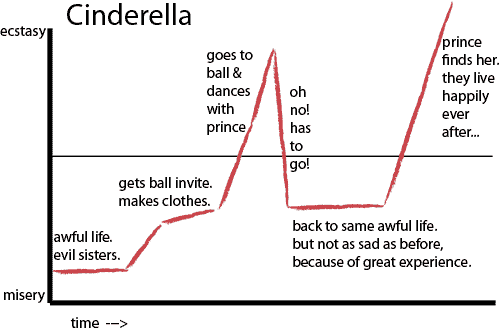This article which I picked up from DIY Musician, written by Scott James, originally appeared on Echoes.
In 2009, Rob Walker and Joshua Glenn tried out a little experiment. They spent $128.74 on a bunch of yard sale junk and hired professional writers to draw up interesting stories about each item. Then they put everything up on eBay with the stories that they created to see what happened.
They spent $128.74 on junk and turned that into…$3,612.51!
How does that work?
Sounds like a good question that’s worth exploring, doesn’t it? You might find some insight from the story of a flannel ball that they sold. A pretty worthless object, right? Not much practical value there. Accordingly, they originally paid $1.50 for it. You might be surprised to know that they ended up selling the ball of flannel for $51!
How? Well it all started by imagining it as something with a story. Something beyond just the utility value. Check out the first paragraph of the story that was written for it by Luc Sante:
Suddenly we’re not thinking about the intrinsic value of a ball of flannel, but instead we’re drawn into a story… and ultimately projecting the intrigue and emotions of the story onto the object. What we have to realize is that people aren’t paying for objects, they’re paying for the meaning that they assign to the objects.
So when you’re pitching your CD, are you communicating that you’re just selling your CD or are you communicating the story of the blood, sweat, tears, fun, hope, dreams, inspiration, excitement, talent, heartache, challenge, and triumph that went into it? What are you saying about it on stage? What are you writing about it to your mailing list? How are you presenting it on your website? Are you telling a story or just selling an object?
In 2009, Rob Walker and Joshua Glenn tried out a little experiment. They spent $128.74 on a bunch of yard sale junk and hired professional writers to draw up interesting stories about each item. Then they put everything up on eBay with the stories that they created to see what happened.
They spent $128.74 on junk and turned that into…$3,612.51!
How does that work?
Sounds like a good question that’s worth exploring, doesn’t it? You might find some insight from the story of a flannel ball that they sold. A pretty worthless object, right? Not much practical value there. Accordingly, they originally paid $1.50 for it. You might be surprised to know that they ended up selling the ball of flannel for $51!
How? Well it all started by imagining it as something with a story. Something beyond just the utility value. Check out the first paragraph of the story that was written for it by Luc Sante:
After my friend Claude had his accident I went to visit him in the hospital. When I saw him I had to cough to divert a laugh. He looked like a guy in a cartoon, his entire body wrapped in bandages. He had broken everything that could be broken, from his skull to his toes. Somehow he was conscious and could speak, although to hear him I had to put my ear right up to his mouth-hole. I thought he said “door,” so I shut it, but he was still agitated. Eventually I got it: “drawer.” The one in his bedside stand contained a single object, a ball of wrapped flannel that looked like his head, only more colorful. I went to pick it up with my fingertips, but then had to readjust. Astonishingly, the thing weighed at least five pounds. I gaped at it, but Claude was making noises. I finally understood: “Don’t unwrap it.”
Suddenly we’re not thinking about the intrinsic value of a ball of flannel, but instead we’re drawn into a story… and ultimately projecting the intrigue and emotions of the story onto the object. What we have to realize is that people aren’t paying for objects, they’re paying for the meaning that they assign to the objects.
So when you’re pitching your CD, are you communicating that you’re just selling your CD or are you communicating the story of the blood, sweat, tears, fun, hope, dreams, inspiration, excitement, talent, heartache, challenge, and triumph that went into it? What are you saying about it on stage? What are you writing about it to your mailing list? How are you presenting it on your website? Are you telling a story or just selling an object?





